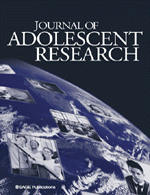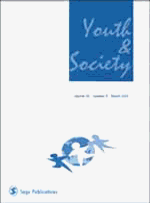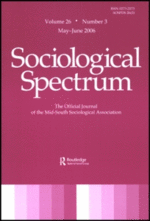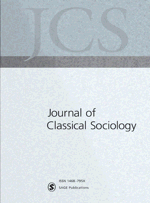Patricia Snell Herzog, PhD
Sociological Imagination in Action: Advancing Data and Tech for Good

Each generation’s approach to giving and volunteering can change over time. This chapter identifies what constitutes generational changes and what that means for the ways in which different generations envision engaging with organizations.

Patricia Snell Herzog and Heather Price. 2016. American Generosity: Who Gives and Why. Oxford University Press.American charitable giving veers from the hyperbolically generous to the hyperbolically stingy. On some days, no one has a quarter to spare; in times of disaster, Americans will put their lives on hold to build houses for those displaced by hurricanes. The crucial question of who gives and why they do it lies at the heart of American Generosity. Patricia Snell Herzog and Heather Price..


This chapter explains how visuals enhance the study of social problems through four examples of data collection and research dissemination. The first example studies meaning differentiation by examining photographs that represent the concept of community. The second studies social isolation via network graphs of social media connectivity. In the third example, the problem of racial segregation is critically analyzed through maps that serve as visual tools for disseminating information about...

This book helps students navigate the first year of college and beyond by using social scientific research to understand the often hidden rules of college. (full pdf available)

This chapter reviews the concept of civic morality and its role in democracy. The first section defines civic morality, including what it is as well as what it is not. Simply stated, civic morality is the belief that one should engage in efforts to promote social and public goods along with actions intended to promote the wellbeing of others beyond the self. These are neither solely personal individual beliefs that are not publicly shared nor government prescribed public acts.

Herzog, Patricia Snell and Song Yang. 2018. "Social Networks and Charitable Giving: Trusting, Doing, Asking, and Alter Primacy." Nonprofit and Voluntary Sector Quarterly, 47(2): 376-394.This study examines social networks and financial giving to charitable or religious causes. Conventional social capital measures of general social trust and size of social network are studied as predictors of charitable giving. To these traditional measures, we add an examination of particular network aspects...

Many publicly available datasets exist that can provide factual answers to a wide range of questions that benefit the public. Indeed, datasets created by governmental and non- governmental organizations often have a mandate to share data with the public. However, these datasets are often underutilized by knowledge workers due to the cumbersome amount of expertise and embedded implicit information needed for everyday users to access, analyze, and utilize their information.

Does interacting with social science data in early adulthood promote generosity? To investigate this question from a life course development perspective, two distinct samples were drawn for a survey with an embedded experimental design. The first sample is of emerging adult college students (n = 30, median age = 20 years). The second sample is of young adults who were selected to participate based on their prior participation in a nationally representative and longitudinal study (n = 170...

Contextual effects are spatially bound social resources that culminate in more or less advan- taged geographic areas. As a type of social prob- lem, disadvantages embedded in contexts bundle into multiple forms of deprivations that continue to affect people in later life-course stages, even after moving out of high-poverty areas. Contex- tual effects are typically studied at the neighbor- hood level, such as census tracts, and also at the metropolitan, county, state, and national levels.

Bibliometric methods are relevant for a range of applications and disciplines. The majority of existing scholarship investigating citation and reference patterns focuses on studying research impact. This article presents a new approach to studying the curriculum using bibliometric methods.

This book introduces some of the analytical approaches that the social sciences bring to the study of philanthropy. Readings introduce the role of philanthropy in promoting social justice and civil society; intersections of philanthropy with important issues in the social sciences, such as race, class, gender, religion, and youth; organizational theories; and examples of philanthropy analytics, both traditional modes of data collection and contemporary data science.


Patricia Snell Herzog. 2018. “Philanthropy.” In Marc H. Bornstein, Martha E. Arterberry, Karen L. Fingerman, and Jennifer E. Lansford (eds.), The SAGE Encyclopedia of Lifespan Human Development. SAGE.Philanthropy is a practice of donating to foundations or nonprofit organizations for the purposes of bettering the collective good. Because philanthropic gifts often come in the form of monetary donations and are typically given to support charitable causes, philanthropy can be thought of as synonym

Patricia Snell. 2010. “Emerging Adult Civic Disengagement: A Longitudinal Analysis of Moral Values in Explaining Interest in Political Involvement.” Journal of Adolescent Research. 25(2): 258-287.

Patricia Snell Herzog. 2011. “‘Just Reproduce After What I Taught You:’ Spatial Segregation of Religious Youth Socialization and the Reproduction of Social Inequality.” Youth & Society, 43(3): 931-956.

This is a book about young people-youth and emerging adults. The contributors in this volume investigate the religious and spiritual lives of young people, especially as they relate to inclinations to do good for others. People are increasingly interested in, concerned about, and excited for the generational changes occurring to faith and giving, as young people become adults. Emerging adulthood and the millennial generation receive considerable scholarly and public press attention...

This study integrates developmental and cultural approaches to student development and finds that millennial college students are responsive to moral formation. A particular challenge to prosociality among contemporary generations is growing up within a cultural context that aggrandizes a self-focus during emerging adulthood. Businesses are increasingly integrating spirituality at work, in part because of the benefits religiosity has in developing prosocial behaviors. However, businesses and...

This special issue addresses the science and imagination of living generously. Generosity is investigated from multiple disciplinary approaches, across the seven articles included in the issue. The first article engages an economic approach to address heterogeneity and generosity for adult Americans, analyzing charitable giving before and after the great recession of 2008. The second article engages a psychological approach to investigate later life-course generosity by studying mortality ...

A social fact consists of collective thoughts and shared expectations that influence individual actions. Examples of social facts include social roles, norms, laws, values, beliefs, rituals, and customs. Violating social facts confirms their existence because people who act against social facts are typically sanctioned. Sociology is one of the primary disciplines in which social facts are studied.

Patricia Snell Herzog. 2016. The Sociology of Emerging Adulthood: Studying Youth in the Context of Public Issues, First edition. Cognella Academic Publishers.This anthology explores what it means to be a twenty-something in contemporary society. The readings examine the relatively newly acknowledged stage of life known as emerging adulthood through a sociological lens, which enables student-readers to understand their personal challenges within the context of public issues...

Christian Smith, with Patricia Snell. 2009. Souls in Transition: The Religious Lives of Emerging Adults in America. Oxford University Press.

Christian Smith with Kari Christoffersen, Hilary Davidson, and Patricia Snell Herzog. 2011. Lost in Transition: The Dark Side of Emerging Adulthood. Oxford University Press.

Christian Smith and Michael Emerson, with Patricia Snell. 2008. Passing the Plate: Why American Christians Don’t Give Away More Money. Oxford University Press.

Patricia Snell. 2009. “What Difference Does Youth Group Make?: A Longitudinal Analysis of Religious Youth Group Participation and Religious and Life Outcomes.” Journal for the Scientific Study of Religion, 48(3): 572-587.

Patricia Snell Herzog. 2016. The Sociology of Emerging Adulthood: Social Changes and Pathways to Adulthood, Preliminary edition. Cognella Academic Publishers.

Brandon Vaidyanathan and Patricia Snell. 2011. “Motivations for and Obstacles to Religious Financial Giving.” Sociology of Religion, 72(2): 189-214.This paper extends previous findings on religion and generosity by developing and assessing a conceptual typology of potential motivations for and obstacles to religious giving. Specifically, we examine “socialized giving,” “need giving,” “normative giving,” and “guilt giving” as potential motivators, and “wealth insecurity,” “giving illiteracy,” ...

Youth Group Cliques: How Religious G

Patricia Snell Herzog. 2012. “Accidental Inequality: How Religious Youth Socialization Reproduces Social Inequality.” Sociological Spectrum, 32(4):291-308.

Patricia Snell. 2010. “From Durkheim to the Chicago School: Against the ‘Variables Sociology’ Paradigm.” Journal of Classical Sociology, 10(1): 51-67. ->SAGE most downloaded article of those published in 2009 and 2010 (2010)

Patricia Snell. 2011. “Critical Space: Divisions, Ambiguities, and Conceptions of Space in Social Theory.” In Ieva Zake and Michael DeCesare (Eds.), New Directions in Sociology: Essays on Theory and Methodology in the 21st Century. MacFarland & Company, Inc., pp.104-120.

The Chicago School of sociologists theorized social change primarily through a set of theories referred to as the “organism metaphor.” Organism metaphors of society have characterized society as a whole functioning together as a single organism, or have characterized societies as composed of a number of organisms functioning in an ecological system. Chicago School sociologists interpreted the organism metaphor as less functional and more conflict oriented. Their attention to the unequal distr...

Religious congregations are hypothesized to be a community organization affected by contextual inequalities. Survey and interview data are analyzed to investigate the type and prevalence of youth programming in a geographic area. Rather than drawing a sample of religious congregations in the area, the telephone survey was conducted with every congregation located in the three contiguous cities. Coupled with the high response rate (98.9%), this allows for a unique analysis of a total population o

This paper explores how and why religious adherents participate in self-sacrificing behaviors, such as religious giving. Though previous literature shows that monetary giving can be conceptualized as a way to participate in the sacred, questions remain about how this sacralization process occurs and how it may differ across congregational contexts. This ethnographic analysis identifies distinct cultures of money sacralization by comparing and contrasting the “sacralized frames” of two religio...

This paper examines the implementation of a participatory action research study as a parent involvement strategy in one urban, Colorado middle school thought to have low parental involvement. Parent leaders from the middle school community participated in the data collection, analysis, and dissemination as ‘promotora researchers.’ These parent promotora researchers facilitated parent focus group sessions, collectively analyzed data, presented findings to the school community, and reflected on...

This paper provides a descriptive analysis of congregationally-based youth programs in one geographically specified area in northern Indiana. A response rate of 98.9 percent (N=269) from congregations to a survey and 42 additional in-person interviews with youth ministers were conducted to compile data on the characteristics of congregations, youth attendance, youth groups, and youth ministers across denominational categories. Results of the study support the hypothesis that youth programming...